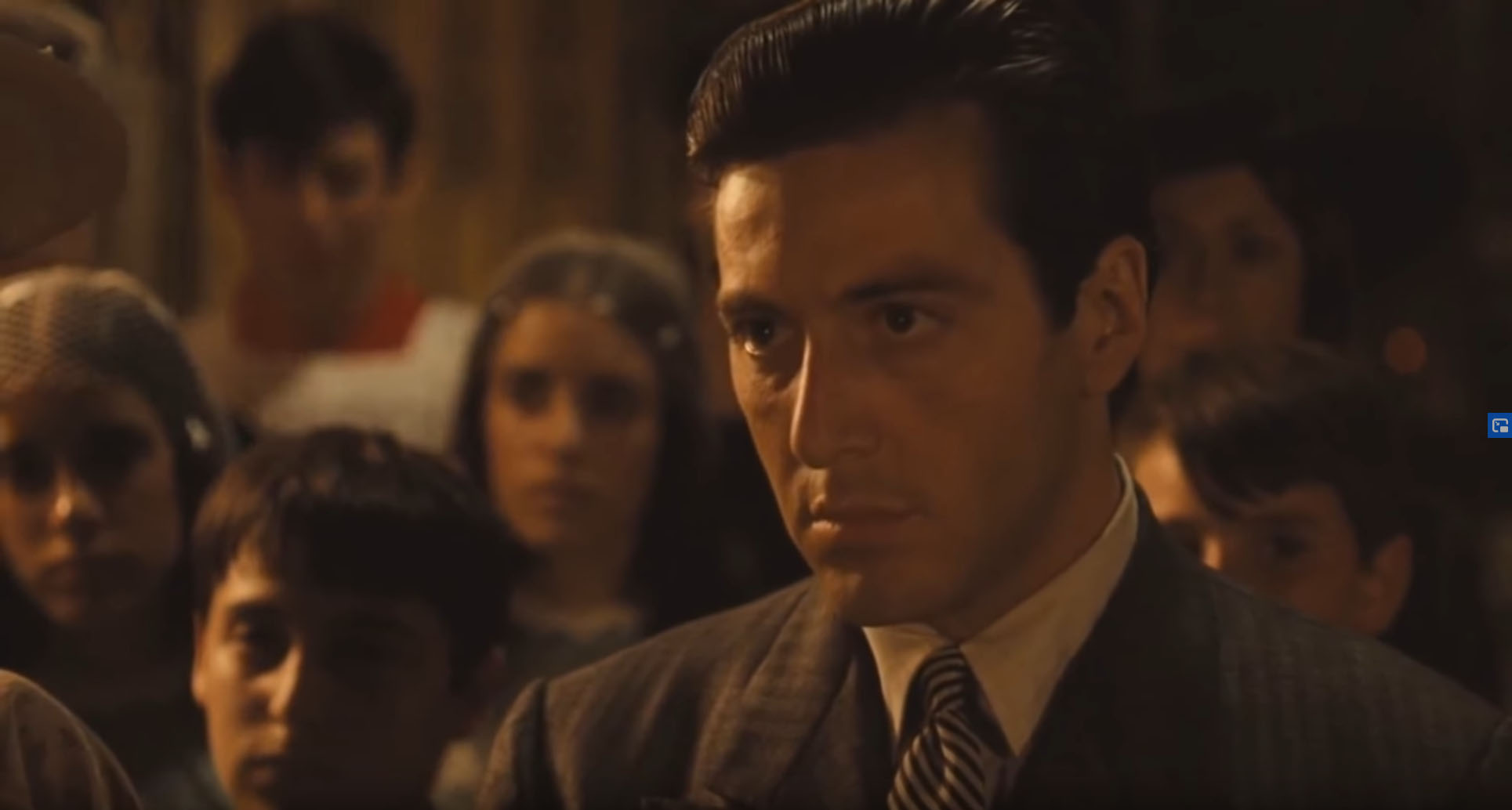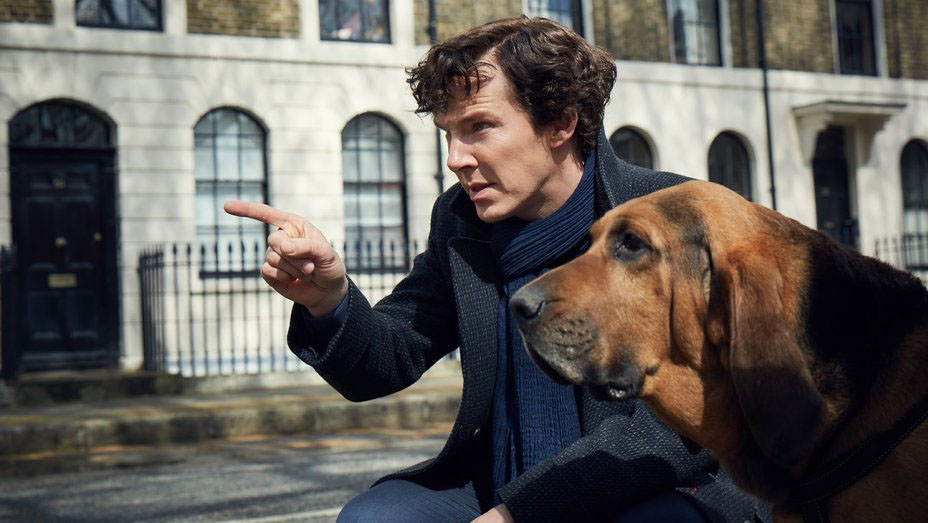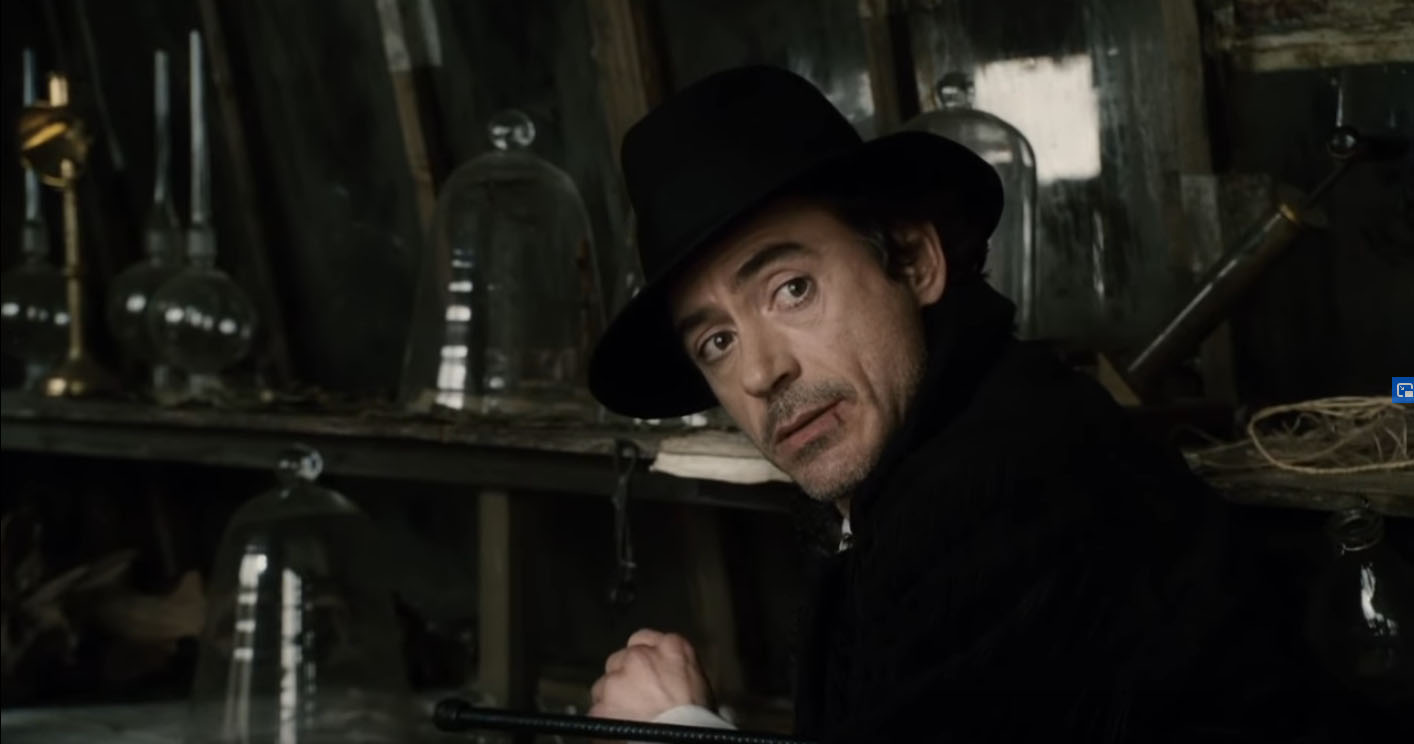The cinematic technique of the montage is vaguely defined and multifaceted. In the French tradition “montage” refers to all editing. In Soviet montage theory, it is specifically the juxtaposition of non-sequential imagery in order to create specific meaning. The basic definition provided by Wikipedia, however, is, “A film editing technique in which a series of short shots are sequenced to condense space, time, and information.” It is in this sense that one has the “montage sequence” which is specifically designed to show the passage of time, and is what is most often referred to by the shorthand of “montage” in English.
FRAMING THE MONTAGE
The basics of a montage, therefore, can be understood as very hard cuts from one sequence of action to the next.
In The Art of Pacing, I discussed at length how we frame, fill, and close scenes. Creating a montage basically consists of framing very hard and very deep into a scene, spending the least amount of time necessary to address the agenda of that scene, and then aggressively cutting to the next scene (which is similarly framed very hard). This effectively creates a sequence of micro-scenes.
The trouble with doing this kind of hard scene framing as a GM is that it becomes increasingly difficult for the players to meaningfully contribute to what’s happening. (This is why, as I noted in The Art of Pacing, the harder the scene framing becomes, the more likely it is that a game or GM will introduce narrative control mechanics in order to return control back to the players.) For example, consider the famous baptismal montage from the end of The Godfather:
To get cuts that tight and that focused, it would seem as if the GM would basically just be saying, “Okay, cut from the church. We’re in your kitchen. You’re cleaning and assembling your gun. We cut back to the church.” There’s no breathing room for a back-and-forth conversation; no space for the players to propose an action.
When you get this tight, though, something interesting happens: The GM can actually invert the players’ part in the conversation of meaningful choices. Instead of framing the scene, the GM can instead prompt the players to frame each micro-scene.
This is the first secret of the RPG montage.
In this example the players have proposed simultaneously assassinating the other New York dons. Michael Corleone’s player, though, says, “I’ll need an alibi. What if we do it while I’m baptizing my kids?”
(“That’s fucking dark,” says Kay’s player. “I love it.”)
So the GM describes the baptism. And then, rather than framing to the next scene, the GM prompts one of the players:
GM: Rocco, how do you prepare for your murder?
Rocco: I’m in my kitchen, disassembling and reassembling my gun.
GM: Outside the window we can see your family relaxing on the beach. Your fingers shove pieces of metal together with the casual precision of familiarity. We cut to—Clemenza, what are you doing?
Clemenza: I’ve got my shotgun packed in a cardboard box. Looks like I’m delivering a package. I pause to polish a bit of dirt off my immaculately detailed car.
GM: Great. We cut back to the church, where the priest does the sign of the cross, gesturing with his hand as if using a cloth to wipe clean Michael’s sin. He grabs a few grains of salt and presses them to Anthony’s mouth. Anthony’s little hands reach up and touch his own chin. What about you Willie?
Willie: I’m getting a shave.
We finish that cycle of declarations and then the GM presents a second prompt by telling each of the players where their assassination is taking place:
GM: Don Barzini is working in his office building. What’s your plan, Al Neri?
Al Neri: Well, I’m dressed as a cop. Does Barzini leave his office at the same time every day?
GM: Sure. He comes out the front door and gets into his limo. Like clockwork.
Al Neri: Okay, then about five minutes before he’s due to leave, I’ll stroll up and tell the limo to move along.
GM: The driver refuses.
Al Neri: I’ll start writing him a ticket just as Barzini comes out of the building. That should distract him and his bodyguards.
And the GM, once again, goes around the table with this prompt and we get the second phase of the montage, with everyone setting up their attacks. The GM continues cutting back to the baptism. Maybe he’s pulled up the Catholic rite on his phone and is reading it out loud through the entire sequence. He reaches the point where the priest says, “Michael, do you renounce Satan?”
Then we hit the final phase of the montage: The GM calls for whatever action checks are necessary to resolve each murder (which in some cases might be attack rolls; in other cases it might be a Stealth or Deception test). It’s a montage, so the GM will probably want to keep these resolutions mechanically tight (rather than, for example, going into full-fledged combat rounds).
The GM’s on his game, so at the end of each murder he continues plugging in the renunciation of sin, pressuring Michael with the hypocrisy of his answers: “And all his works?” “And all his empty promises?” Maybe he calls for Kay to make an Insight check to see if she notices that something is wrong with Michael.
And that’s your basic structure of a mass assassination montage:
- Prompt micro-scenes by requesting preparations for the murders
- Declare the locations of the murder and prompt declaration of the murder
- Resolve the murders
If any of the PCs aren’t directly contributing to the murders, see if you can frame them into a scene that contrasts or thematically comments on the murders and then cut back and forth between that scene and the rest of the montage. (But this isn’t strictly necessary. It’s okay if only some of the PCs are participating in a particular montage.)
This structure points us towards the second secret of the RPG montage: In order to be an effective montage, the micro-scenes which make up the montage must have an overarching agenda — a question that the montage as a whole is seeking to answer. (In this case, the question would be, “Is the Corleone family successful in taking out all of the other dons?”) Without that unifying agenda, the montage will lack focus and purpose. It will just be a bunch of random stuff thrown in a blender (and you’d probably be better off resolving the elements of the montage separately).
This specific structure probably has limited usefulness, though, because how often are your players going to propose simultaneous mass murder in multiple locations?
(Don’t answer that.)
RUNNING THE INVESTIGATIVE MONTAGE
One response to this could be a GM-led montage. Here the GM basically uses the same technique, but instead of waiting for the players to say something like, “We’re going to try to murder all the dons simultaneously,” the GM initiates the montage by saying, “Okay, at this point you’re going to murder all the dons simultaneously.”
Of course, a GM-led montage doesn’t sound like the right decision in this case. The decision to murder a lot of people is obviously a really meaningful choice and skipping past that choice (effectively taking that choice away from the players and making it for them) is almost certainly problematic and very disruptive to the conversation of meaningful choices which is the fundamental principle of the RPG medium.
(In a storytelling game, your mileage might vary depending on how the narrative control mechanics are set up.)
This doesn’t, however, mean that GM-led montages are never a good idea in RPGs. A common counterexample is the investigative montage, the point in a detective story where there’s a bunch of different leads and legwork to pursue, so we get a montage of the heroes splitting up, investigating the shit out of it, and then coming back together with the insights and conclusions that drive us forward into the next chunk of plot. A GM-led montage (“Okay! It’s time to split up and do the legwork! Farida, how are you working the case?”) can work here because the context has already established that the PCs want to solve the mystery being investigated. The GM is pushing a structure for resolving that desire (and framing hard to do it), but he’s not taking the meaningful choice (“let’s investigate this mystery”) away from the players.
I actually spent a non-trivial amount of time trying to find the perfect cinematic or literary exemplar of an investigative montage for us to work from here, but I have been unsuccessful. (Even as I write this, the back of my brain is trying to sidetrack me by saying, “Wait! What about Buffy the Vampire Slayer? I bet we can track down a scene like this with the Scooby Gang! Let’s go spend the next twelve hours trolling through the DVDs!”)
It’s possible that this is a, “Beam me up, Scotty!” moment, where I’m convinced that scenes like this exist in film or television, but they really don’t. I suspect, though, that the reason I can’t find the exact scene haunting the corner of my mind’s eye is because most detective stories in other mediums feature a sole protagonist, so the typical investigative montage just features one guy doing a bunch of stuff in quick succession. But by the time I started looking for an example of this to reconstruct, the concept had already transmogrified itself in my mind into the group context of an RPG scenario.
Long story short: I’m not going to worry about it. I’m guessing you probably already know the type of scene I’m talking about, and if you don’t, then you’ll still find investigative montages useful.
The first thing you’ll want for an investigative montage is a list of montage revelations. This basically works exactly like the revelation list you create when using the Three Clue Rule, except that you’re not going to prep specific clues for each revelation. You’re just listing the things the PCs need to learn. These revelations should generally be leads (pointing towards more fully developed scenes) and there should be several of them (one for every two PCs seems to be a good amount). For example:
- One of the victims of the White Lotus assassins survived the attack. Her name is Lisa Cardo and she’s recuperating in a room at Elkhart General Hospital.
- The albino with the Solomonic tattoos the PCs spotted earlier is Vincent Estadio, a personal assistant to the Spanish ambassador.
- There’s an arms dealer named Dogmull who’s rumored to supply the White Lotus with their poisoned darts.
The investigative montage is then resolved in three steps:
- Each player chooses a line of investigation
- Each line of investigation is resolved (probably with a single action check)
- The GM uses the context of the PCs’ investigations to provide the montage revelations
The actual methods of investigation chosen by the players don’t specifically matter, as long as they’re logically things that a cop or private detective would do to turn up fresh leads. (This is basically a version of permissive clue-finding on methamphetamines, right?) Examples might include:
- Checking the casefile.
- Trying to track down that albino they saw earlier.
- Roughing up local crooks to make them spill information
- Analyzing samples of the White Lotus poison in the crime lab
- Putting surveillance on known associates of the White Lotus
- Talking to an old friend or other local contact
For each successful line of investigation, choose one of the montage revelations and then present a fast-paced, hard-hitting sequence that provides it. For example, the lab technician analyzes the White Lotus poison, recognizes a combination of rare chemicals and checks shipping records that indicate a suspected arms dealer named Dogmull has been importing the chemicals.
(You can either just cut away from failed lines of investigation, or maybe inflict some kind of consequence or complication from them. These can be mixed freely into the montage of the other results.)
If you have more successful lines of investigation then there are montage revelations, find ways to either split the revelation into separate parts which can be split up across multiple PCs and/or sequenced so that one PC’s investigation enables another’s. (If you just repeat the same revelation for multiple players, it’s disappointing and anti-climactic for the second player who gets the result.)
For example, the PC checking the casefile might see that there’s a victim named Lisa Cardo who survived the attack but has since vanished. Meanwhile, one of the local thugs being roughed up by another PC tells them that he heard a rumor the Lotus were going to axe a witness who’s being cared for over at Elkhart. (This is one revelation being split into separate parts that are discovered independently.)
Or: The lab technician analyzes the White Lotus poison and recognizes the rare chemicals. She sends out a text to the team, which another PC receives in the middle of questioning their local contact. They ask their contact about the chemicals, and he identifies Dogmull. (The lab technician’s discovery of the first part of the revelation enables the other PC’s investigation to complete the revelation.)
I recommend resolving all of the lines of investigation and THEN contextualizing the results. Among other things, this will make it easier to figure how to pace/structure the revelations.
SCALE OF THE MONTAGE
You can use this same basic technique at different scales. For example, you could use an investigative montage to either hunt Carmen Sandiego across an entire globe or run a CSI crew investigating a single crime scene.
At the smallest scales, you may discover that this becomes virtually indistinguishable from how you were previously resolving such scenes (asking each player what their character is doing, resolving those actions, synthesizing the narrative result, etc.). This can be a valuable insight for how you can set up and frame montages at larger scales.
You can also flip this around yet again for those situations where all the players want to jump in and have their character participate in a Search check. Rather than just letting them all roll their dice and taking the best result, slip into a montage technique and ask them to specify what distinct thing each of them is doing to contribute to the search. (Or, if they just roll reflexively, you can simply assume they’ve divided the task in your descriptions of the search’s outcome.) Rulings in Practice: Perception-Type Tests has a broader discussion of related techniques you might find useful here.
These, of course, are just two types of montages out of many. But I suspect the basic techniques of the RPG montage to remain fairly consistent to the principles we’ve established here. We’ll probably come back later and explore a few more varieties as part of the scenario structure challenge, too.















Regarding “The Perfect Cinematic Investigation”: How well do you think this montage from “The Fugitive” fits your structure?
https://www.dailymotion.com/video/xytxnc
We’ve got multiple characters–Kimble, Gerard, and the rest of the U.S. Marshals team (though the team really function as an extension of Gerard)–investigating a mystery using different methods.
Technically, the marshals don’t know what they’re actually investigating–they think it’s “Where’s Kimbal?,” when it’s really “Who killed Helen Kimble?” But their investigation is still “pointing” the same direction as Kimble’s.
Perfect. Nice call, Sean.
The other one I think of for an investigative montage (slightly slower-paced than your ideal, but hitting very much the same notes) is every Law and Order episode, from the time they find the body until the time they think they know who did it. It’s always several minutes of very short, staccato scenes, advancing the investigation by bouncing around looking for clues.
Law and Order came to mind for me too, @Asladius – definitely a lot slower paced than hard framed scenes and quick cuts, but very lean and efficient scenes.
I’m not sure if this counts as a montage, but think of the thriller movie trope where the audience sees a sudden twist play out in one scene, while the movie cuts back to another scene where our heroes are unaware. Like the scene in Silence of the Lambs, where we discover during the police raid that Agent Starling is actually in the house of the killer.
I think this could be done very effectively during a climax in an RPG. Timed correctly, it wouldn’t even require the players to keep their “special knowledge” for more than a moment.
@Matt: Absolutely! Check out Part 5 of The Art of Pacing, particularly the section on Crossovers. Widely useful technique that’s well worth exploring as a GM!
Isn’t a Montage a disassociated mechanic?
It’s neither a mechanic nor dissociated.
So… no.
Wouldn’t this work as well for a social scene? A series of quick cuts preparing for the final social showdown. Thinking L5R here with its very well developed social skill system would do well or perhaps the classic preparing for a “masquerade ball”